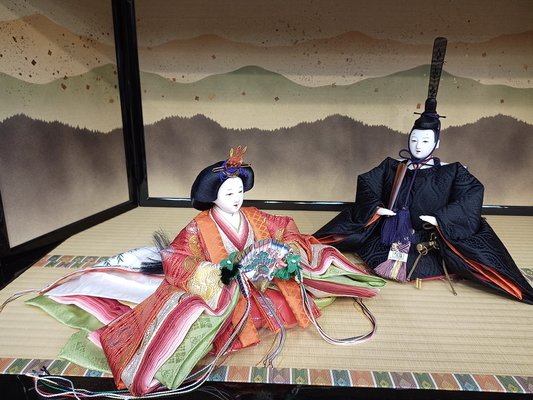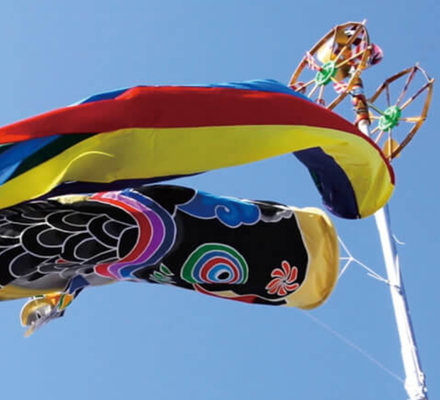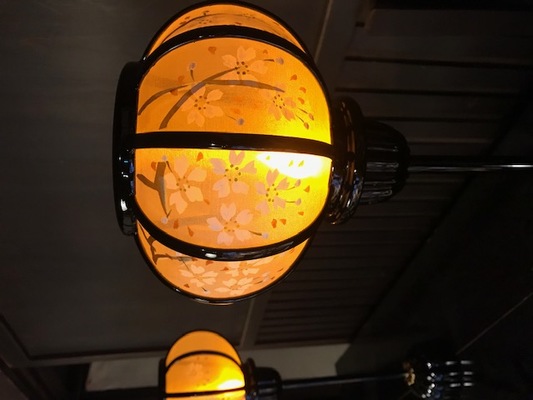
- Other crafts
- Aichi
Nagoya Sekku Kazari Nagoya Sekku Kazari
Elegant techniques from the Edo period to decorate on a special day
Description
What is Nagoya Sekku Kazari ?
Nagoya Sekku Kazari (festival dolls and decorations) are decorations that are essential for festivals to celebrate the birth of a child and wish for the child's healthy growth. The Sekku Kazari consist of three crafts; dolls, celebratory flags and paper-covered lanterns. For example, hina dolls decorated for the Girls' Festival and koinobori (carp streamers) that swim in the sky for the Boys' Festival are both made using the traditional techniques of Nagoya Sekku Kazari.
The production of dolls especially grew to favorably compare with the two leading production areas, Kyoto and Tokyo. The eastern and western styles of Japan are blended in their products. They also make large celebratory flags and carp streamers with bright golden bellies that are unique to Nagoya. They make paper-covered lanterns using high quality material made in the Chubu (mid-Japan) area where they are located, such as natural Japanese cypress and pine wood from the Kiso area and Mino washi (Japanese traditional paper) and Obara washi. They take advantage of their location while adding characteristics of the region and make various products that meet the tastes of both eastern and western Japan.
History

As a castle town of the Owari Tokugawa family, various craft techniques developed in Nagoya since the first half of the Edo period. Paper-covered lanterns for festivals were made repeatedly as a part of regular paper lantern production. Production of dolls and celebratory flags developed to be written as products used for annual events in a book called "Owari Nenjugyoji Esho", a book about annual events in Owari (current Aichi prefecture). The techniques established in 1916 were high level techniques that exceeded those of Kyoto, the leading production area of festival dolls and decorations.
The main materials have been used in Nagoya traditionally since 1903. And having artisans of various fields within the area, they were able to build an integrated system of production from raw material to finished product.
As the Boys' and Girls' Festivals became celebrated generally, they expanded their market nationwide. Nagoya Sekku Kazari are still produced in Aichi and Gifu as of today.
General Production Process

- 【Dolls】 1. Making the head and body The core made of straw is wrapped with paper, and the body and body parts are attached with wires.
- 【Dolls】 2. Making the costume The kimono is made
- 【Dolls】 3. Dressing the doll The dolls are dressed with the collar, hakama (skirtlike trousers) and costume.
- 【Dolls】 4. Finishing
The hands are attached to add some movement to the doll. Finally, the head is attached and the doll is complete.
- 【Flags (Carp streamers)】 1. Placing the pattern, applying glue resist and dyeing The fabric is dyed with pigments.
- 【Flags (Carp streamers)】 2. Drying and washing The dyed fabric is dried under the sun and the resist glue is washed with water.
- 【Flags (Carp streamers)】 3. Sewing and attaching the mouth ring The dyed fabric is cut into the shape of the carp streamer and is sewn. The fins and mouth ring are added in the end.
- 【Lanterns】 1. Making the framework and assembling The framework is made with bamboo or Japanese cypress wood from the Kiso area.
- 【Lanterns】 2. Painting, glueing, and decorating Pure silk is glued on the inner side of the framework of the part to be lighted and is decorated with patterns drawn with colors or ink.
- 【Lanterns】 3. Attaching metal fittings The light fittings are attached and the lantern is complete.
Leading Ateliers
Yamada Ningyou
-
Founded1946
-
DirectorYasuo Yamada
-
Business Hours9:00~18:00
-
Address
-
Website
-
Tel.+81-568-21-0173
See more Other crafts
- Edo kiriko cut glass
- Koshu lacquered deer leather
- Kyo folding fans
- Marugame uchiwa fans
- Boshu uchiwa fans
- Gifu lanterns
- Yamaga lanterns
- Kyo uchiwa fans
- Tendo Japanese chess pieces
- Edo glass
- Edo patterned paper
- Yame lanterns
- Owari Cloisonné
- Fukuyama Koto (Japanese Harp)
- Kyo art preservation
- Banshu fly-fishing flies
- Woodblock prints
- Koshu hand-carved seals
- Edo Hyogu (Art Mountings)
- Edo tortoise shell crafts
- Etchu Fukuoka Sedge Hats
- Gifu Japanese Umbrellas
- Nagasaki tortoise shell crafts
- Nagoya Sekku Kazari
- Sanshin
- Tokyo Koto (Japanese Harp)
- Tokyo Shamisen
See items made in Aichi
- Tokoname ware
- Akazu ware
- Toyohashi brushes
- Nagoya textiles
- Nagoya Buddhist altar
- Owari Cloisonné
- Arimatsu tie-dyeing
- Mikawa Buddhist altar
- Seto-sometsuke ware
- Nagoya kimono-dyeing
- Nagoya traditional paulownia chest
- Okazaki stonemasonry
- Nagoya Sekku Kazari
- Owari Buddhist altar equipment
- Sanshu Onigawara Crafts































































































































































































































































































